· 8 min read
There is a huge amount of debate and discussion about climate change on the Internet. Some are written in a trendy way and give the right numbers and facts, but without having a targeted audience, look toothless. Others are too special. Still, others tendentiously interpret the facts, not understanding their deep physical relationship.
If we exclude the meaningless cries of “freaks”, then the discussion of the third type dominates. Pulling this or that fact out of the whole, activists and skeptics start a verbal skirmish about its meaning. At the same time, ordinary people, if they listen to this skirmish, it is only with bewilderment because they do not see what problems this creates for them. The text presented below tries to focus on the practical significance of climate change, the importance of understanding its causes and consequences, and hence the possibility of predicting and taking the least costly countermeasures.
Everyone understands the climate!
“Am I not seeing climate warming today?!”
One has to hear arguments of this kind: “Yesterday I went out into the street — frost is minus 20. And this is in March! I heard that this year the winter was the coldest in the last 100 years. And they still tell me about global warming!” What is wrong with such reasoning?

Figure 1. Global surface air temperature anomalies (until November 2017), according to NASA GISS data.
A person coexists and exchanges chemicals with the environment and receives life resources from it. Everyday experiences tell people that winter is followed by spring, summer, and, finally, autumn. Winter is colder than summer and tends to bring temperatures below freezing, bringing snow and ice with it. The same experience tells a person that one winter is not like another, just as “year after year does not fall.” And this same experience, passed down from generation to generation, informs a person of the right models of behavior and decision-making, consistent with changes in the environment. It is by checking with such “ordinary” or, scientifically, “traditional” knowledge about the environment that a person judges change and unusual phenomena in nature.
Traditional knowledge is the backbone of climate-conscious people. Why check with the observational figures, if it is already clear that “this winter is the coldest of all that I have seen.” “And my grandfather plowed already in March! And here you are telling us about warming,” the interlocutor remarks with knowledge of the matter.
In fact, traditional knowledge, however useful it may be in everyday life, has little to say about the climate, even for those who “sow and plow”, not like modern city dwellers. Climatic processes unfold on spatial and temporal scales, often exceeding the horizons and life cycle of one person. A paradox arises. Against the background of interannual and interseasonal variability, a person is practically unable to notice climate change. However, a person is forced to still think about it, since the communities (for example, the state), of which he is a part, exist in the expanses and periods of time when these very changes become more than noticeable. A wonderful illustration that shows the variability of the weather in relation to climate change is proposed by an analogy using the walk of a person (climate) with a dog (weather) in Figure 2. And note that the dog is on a strap!
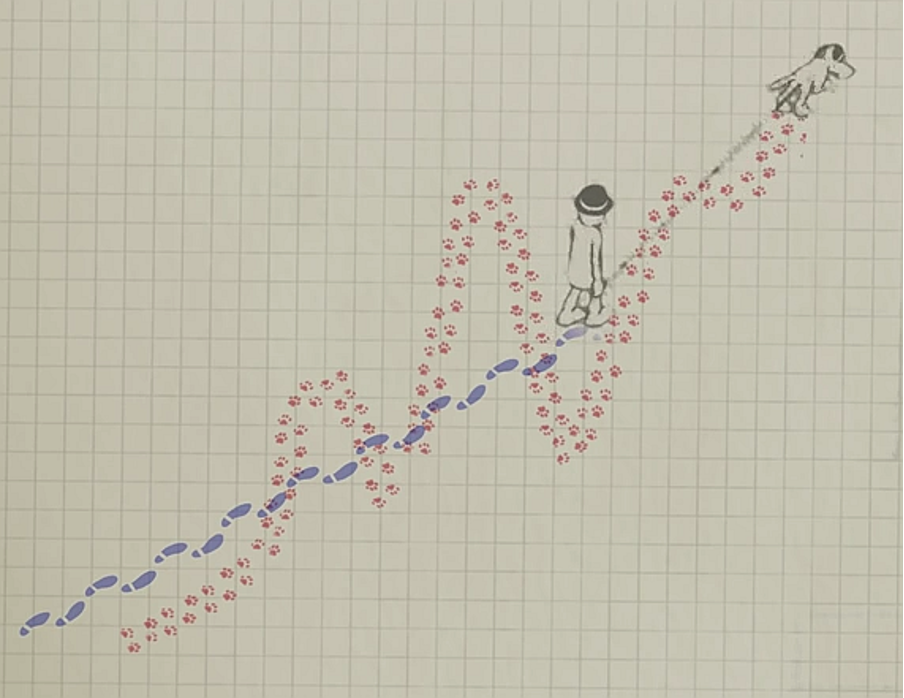
Studying the climate with numbers in hand shows that regional deviations from the general direction of change can be quite significant. Against the background of global warming, which is mainly determined by the tropical regions of the oceans (about half of the Earth’s area), there are significant areas where winter temperatures can drop for the last 20–25 years, such as in Siberia, or rise even faster, as in the Arctic. Moreover, the recent acceleration of climate change is leading to increasingly unusual weather anomalies. Figure 3 shows huge (up to 20°C above normal) winter heat anomalies in the Arctic and Eastern Europe and equally huge (up to 20°C below normal) cold anomalies in America at the end of 2017.
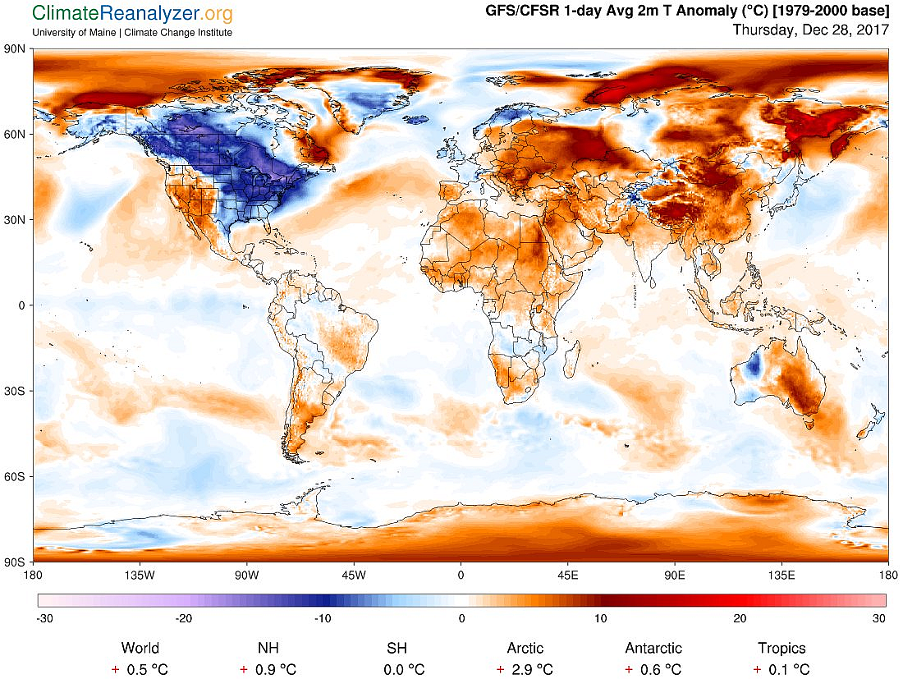
Figure 3. Weather anomalies (air temperature) according to the CSFR data assimilation system at the end of December 2017.
From the same figure, it can be seen that large deviations of weather conditions from the usual for a given season and a given region (scientific — anomalies) cover only a limited area and a limited time interval. The next one — Figure 4 — shows changes in temperature anomalies since 1979 for seven regions centered on the middle Ob region of Western Siberia. For the smallest area (1), it is difficult to say anything definite about warming or cooling, since temperature changes from year to year to overlap long-term trends. However, as increasingly extensive territories are involved in the analysis, local features are extinguished by opposite features from neighboring territories, as can be clearly seen in Figure 3. Conversely, what is common in temperature changes in these territories is enhanced. It turns out that this is common and is a gradual increase in temperature, that is, global warming, and for the region (7), and this is the whole of Eurasia, which occupies a quarter of the Earth’s surface, it is very clearly manifested.
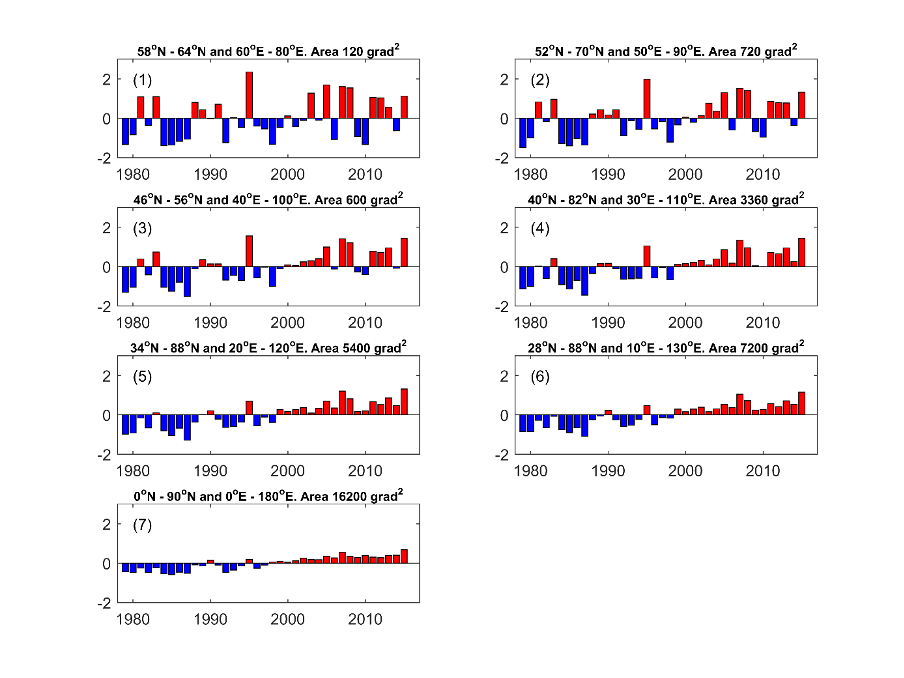 Figure 4. Change in the average annual air temperature since 1979 for territories of assorted sizes from centers in the middle Ob region of Western Siberia. The size of territories increases from the smallest region (1) to the largest region (7). Data were taken from ERA-Interim 3rd generation reanalysis. Author’s edit.
Figure 4. Change in the average annual air temperature since 1979 for territories of assorted sizes from centers in the middle Ob region of Western Siberia. The size of territories increases from the smallest region (1) to the largest region (7). Data were taken from ERA-Interim 3rd generation reanalysis. Author’s edit.
Is global warming real?
Why climate change is so hard to notice
Why do you think that global warming is a reality? Where can we see its manifestations around us?
Climate change is a slow process and is still hardly noticeable against the background of interannual weather anomalies in most parts of the world (Mahlstein et al., 2011). First of all, climate change is noticeable where the weather itself changes little, that is, in the tropics over the oceans. But just there, there is nothing to demonstrate it, except for dry statistical figures. Figure 5 clearly demonstrates these difficulties. Public opinion studies have shown that people are much more willing to agree with the conclusions of climatologists about global warming if, in their memory, extremely warm years have happened relatively recently. In this sense, the exceptionally sweltering summer in central Siberia in 2010 and the Arctic regions in 2016 helped to seriously change the opinion of Eastern Europeans and Western Asians about climate processes.
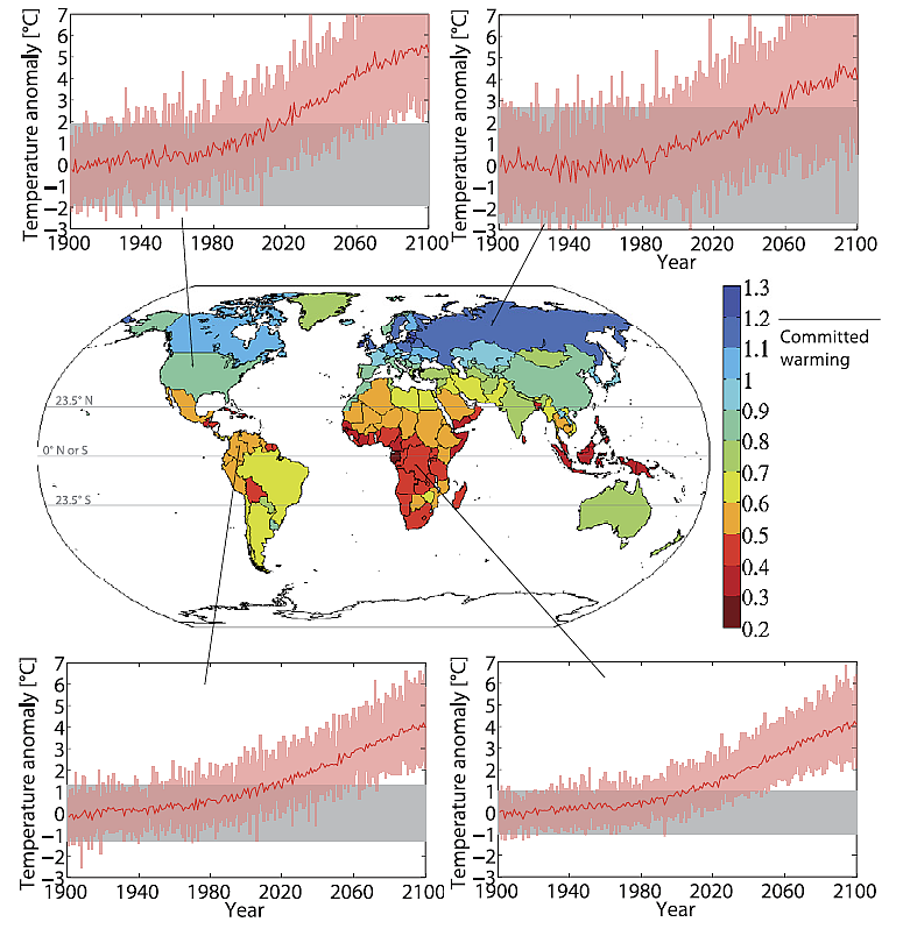
Figure 5. The expected year when the excess of observed climate anomalies becomes apparent to an outside observer, i.e. when the red line leaves the gray zone on graphs for different regions (Mahlstein et al., 2011). For the territory of Europe and Asia (top right), climate anomalies will become apparent by 2050, although some years (red background) are already showing anomalies that have never been observed before, for example, the heat wave of 2010. For tropical regions, climate change is already evident.
Where are the signs of climate warming obvious to everyone?
Nevertheless, there are regions in the world where climate change is more than evident. This is the Far North and the Arctic, although there are “understanding” people there who flatly refuse to believe their eyes. Figure 6 more than graphically shows the retreat of a glacier in Norway over 121 years. Moreover, the glacier managed to disappear even from the past in the mountains! Glaciers are retreating all over the world, although in some places some glaciers are growing due to more snow falling. The obvious fact that mountain glaciers are retreating is particularly important. It is climate warming due to carbon dioxide emissions that should lead, first of all, to the heating of the upper atmosphere (3–6 km above the Earth’s surface), and only then to the surface itself. Neither the Sun, cosmic rays, nor natural climatic changes lead to such a cunning effect.
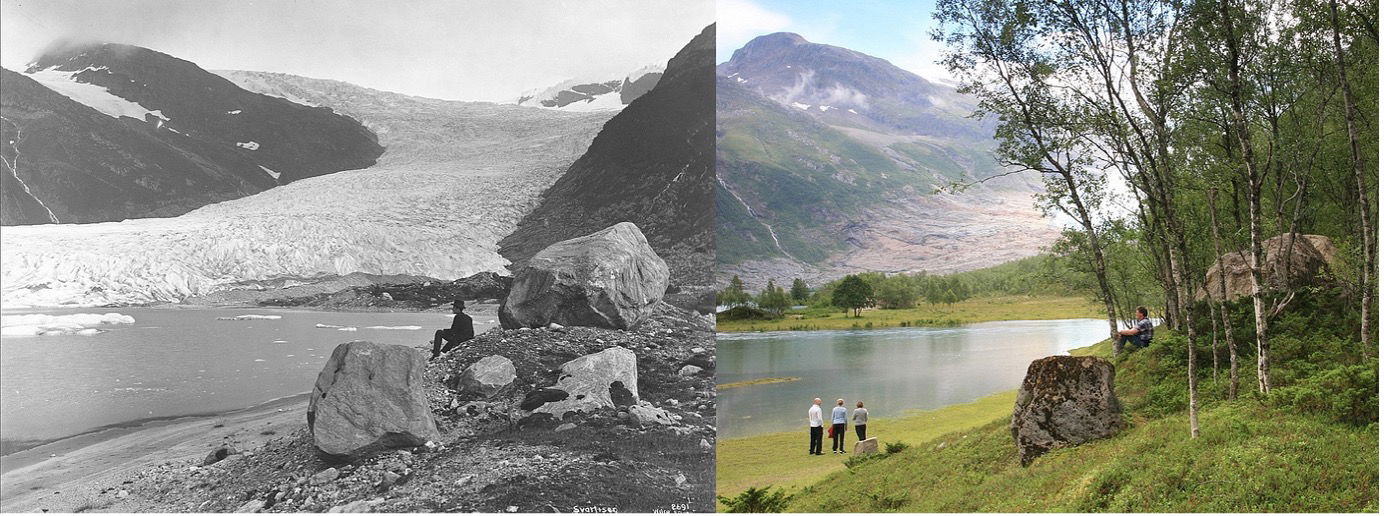
Figure 6. Engabreen is a glacier in northern Norway (Mo I Rana). The photographs were taken from the same point in 1889 and 2010.
Figure 7 shows a much larger ice loss in the Arctic Ocean. And although the Arctic Ocean is still freezing, this ice is no longer the same. It is much thinner, and saltier and therefore melts and breaks faster.
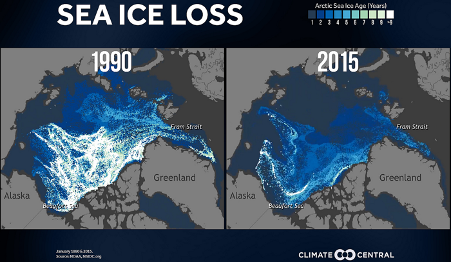
Figure 7. Age (white ice — old) and the position of ice in the Arctic Ocean according to Earth-sounding data from space.
This article is also published on the author's blog. Future Thought Leaders is a democratic space presenting the thoughts and opinions of rising Sustainability & Energy writers, their opinions do not necessarily represent those of illuminem.






